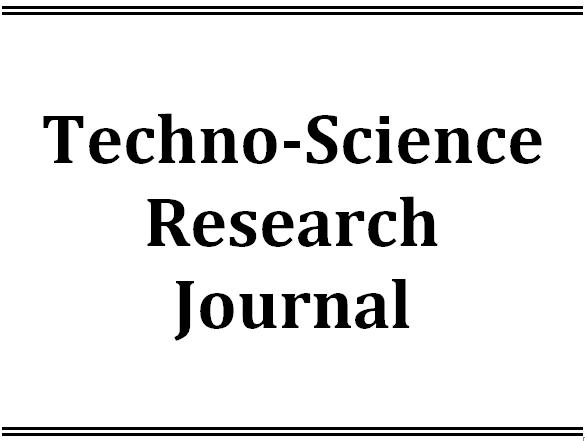Latest Issue
Empowering Education with Online Khmer Handwritten Text Recognition for Teaching and Learning Assistance
Published: August 30,2025Undergraduate Student Dropout Prediction with Class Balancing Techniques
Published: August 30,2025Status of Seawater Quality at Koh Rong Island, Sihanoukville, Cambodia
Published: August 30,2025Low-Complexity Detection of Primary Synchronization Signal for 5G New Radio Terrestrial Cellular System
Published: August 30,2025Word Spotting on Khmer Printed Documents
Published: August 30,2025Tuning Hyperparameters Learning Rate and Gamma in Gym Environment Inverted Pendulum
Published: August 30,2025Examining Passenger Loyalty in Phnom Penh Public Bus System: A Structural Equation Modelling Approach
Published: August 30,2025Prediction on Load model for future load profile of Electric Vehicle charging demand in Phnom Penh
Published: August 30,2025Economic Study on Integrating PV-DG with Grid-Tie: Case Study in Cambodia
Published: August 30,2025Study on arsenic removal rate of combined process of coke-bed trickling filter and sedimentation
-
1. ITC
Academic Editor:
Received: January 22,2024 / Revised: / Accepted: January 22,2024 / Available online: June 01,2019
Arsenic contamination in groundwater has been recognized as a serious issue for health and environment because arsenic is a hazardous and toxic element; therefore, developing new technology is significant to remove arsenic from groundwater. Technology of arsenic removal has been in place through research to mitigate this problem, including aeration approach, Haix absorbent, precipitation, absorption process, and membrane technology. This study aims to evaluate and investigate new method of removing arsenic by applying the combined process of coke-bed trickling filter and sedimentation. One tubewell water from Koh Thom district, Kandal province, in Cambodia was chosen for the study. The concentration of total arsenic (As-T), arsenite-arsenic (As(III)), arsenate-arsenic (As(V)), pH, Mn, and Fe were analyzed. The combined process of coke-bed trickling filter and sedimentation was conducted with four different Phases (A, B, C, D). Phase A represents the flow rate of 1.0 L/day of pumping influent groundwater sample with aeration, and without introduction of iron. Phase B represents the flow rate of 1.0 L/day of influent sample with aeration and introduction of 25 mg/l of iron added. Phase C and D represents the flow rate 1.5 L/day and 2 L/day; respectively, of influent sample with aeration and introduction of 25 mg/l of iron added. The concentration of As-T was removed in Phase A by 29%. Whereas the concentration of As-T showed high effectively removal from 80 to 86% in Phase B, C and D. Specifically, the total concentration of As decreased from 356.25 μg/L to 48.75 μg/L, 108.75 to 21.625 μg/L, and 472.5 to 75 μg/L for Phase B, C, and D; respectively. In conclusion, this combined process could be an effective technique to remove As from groundwater.

